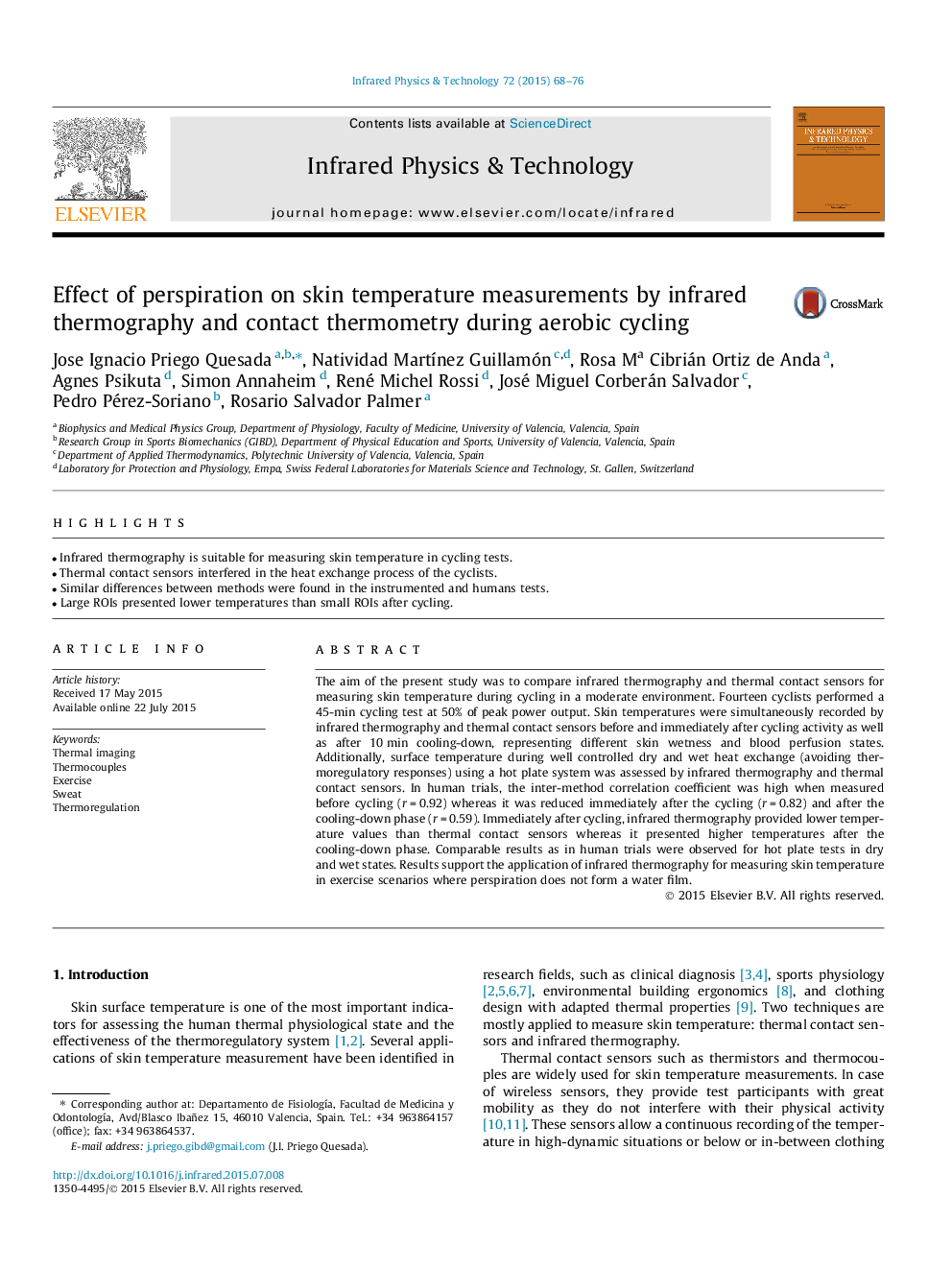| Article ID | Journal | Published Year | Pages | File Type |
|---|---|---|---|---|
| 1784030 | Infrared Physics & Technology | 2015 | 9 Pages |
Abstract
The aim of the present study was to compare infrared thermography and thermal contact sensors for measuring skin temperature during cycling in a moderate environment. Fourteen cyclists performed a 45-min cycling test at 50% of peak power output. Skin temperatures were simultaneously recorded by infrared thermography and thermal contact sensors before and immediately after cycling activity as well as after 10 min cooling-down, representing different skin wetness and blood perfusion states. Additionally, surface temperature during well controlled dry and wet heat exchange (avoiding thermoregulatory responses) using a hot plate system was assessed by infrared thermography and thermal contact sensors. In human trials, the inter-method correlation coefficient was high when measured before cycling (r = 0.92) whereas it was reduced immediately after the cycling (r = 0.82) and after the cooling-down phase (r = 0.59). Immediately after cycling, infrared thermography provided lower temperature values than thermal contact sensors whereas it presented higher temperatures after the cooling-down phase. Comparable results as in human trials were observed for hot plate tests in dry and wet states. Results support the application of infrared thermography for measuring skin temperature in exercise scenarios where perspiration does not form a water film.
Related Topics
Physical Sciences and Engineering
Physics and Astronomy
Atomic and Molecular Physics, and Optics
Authors
Jose Ignacio Priego Quesada, Natividad MartÃnez Guillamón, Rosa Ma Cibrián Ortiz de Anda, Agnes Psikuta, Simon Annaheim, René Michel Rossi, José Miguel Corberán Salvador, Pedro Pérez-Soriano, Rosario Salvador Palmer,
